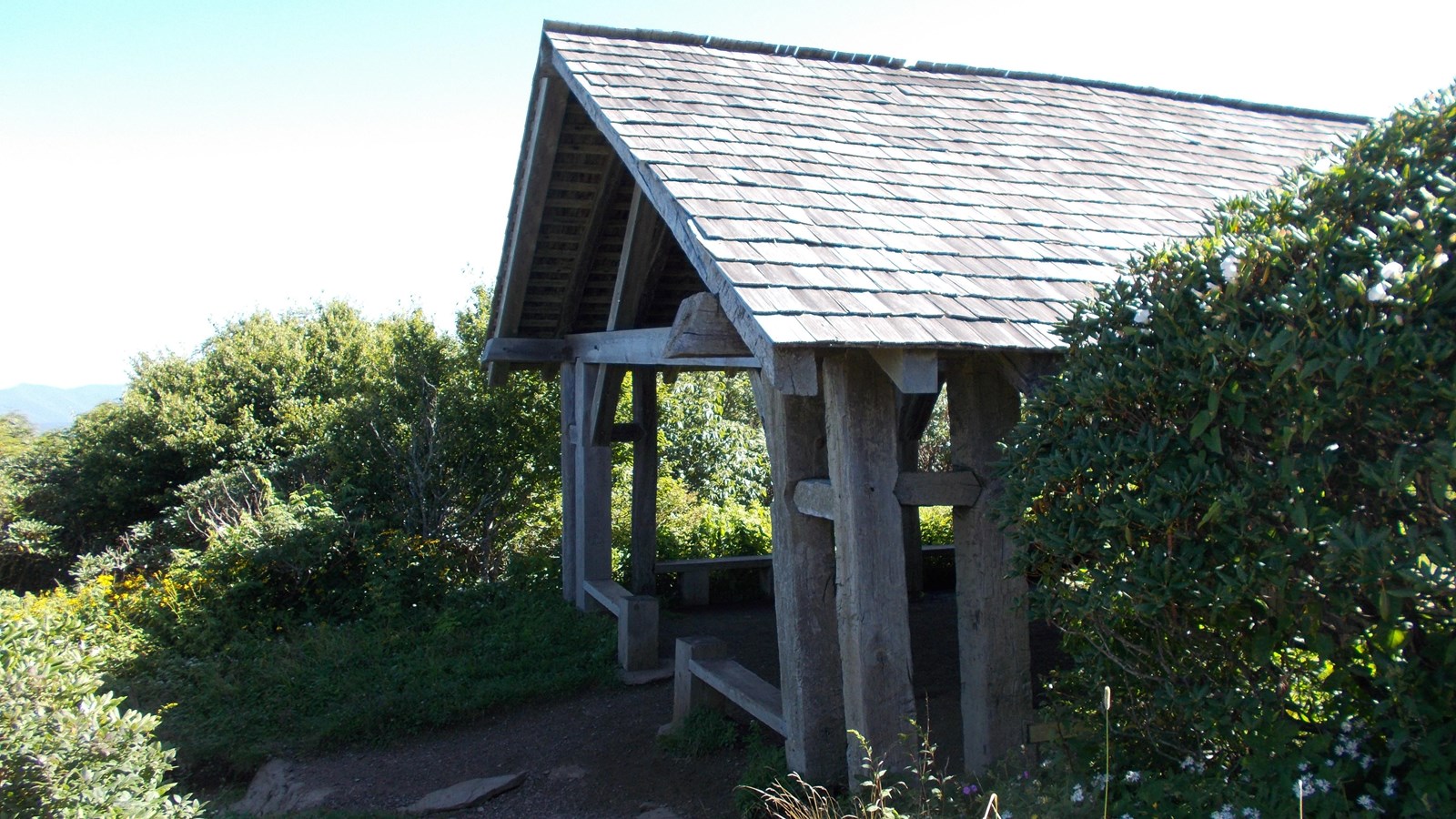Last updated: November 1, 2024
Place
Craggy Gardens CCC Shelter

NPS Photo / Gail Fox
Benches/Seating, Picnic Shelter/Pavilion, Scenic View/Photo Spot, Trailhead
Nestled among the tall rhododendron bushes at the top of the Craggy Gardens Trail is a piece of history. A rustic, wooden shelter greets visitors as they complete their climb. It provides a shady spot to rest or cover from a passing rainstorm. The trail shelter serves as the gateway to Craggy Bald, a beautiful open meadow with expansive views, colorful blooming flowers, and delicious blueberries in late summer. But the trail shelter is also a connector to our past—a relic that pre-dates the Parkway and harkens back to a difficult time in our history.
The Great Depression was one of the worst economic periods in world history. President Franklin D. Roosevelt created a variety of public work relief programs to provide jobs during this terrible economic time. The Civilian Conservation Corps (CCC) was one of the most popular of these “New Deal” programs and focused on conservation projects on public lands. All told, 3 million young men participated in the CCC across the United States and they planted 3 billion trees, constructed trails, campgrounds, picnic areas, and developed landscape projects.
Below Craggy Gardens to the west there was a CCC camp in Dillingham. In 1935 they built a road and trail through national forest land to access Craggy Gardens. Two years later, they added a picnic area and two shelters. The area became so popular that it hosted a Rhododendron Festival—before the Parkway even existed! When the Craggy Gardens section of the Parkway opened in 1950, the property transferred from the U.S. Forest Service to the National Park Service and most of the vehicle traffic shifted to the Parkway from Asheville.
But the legacy of the CCC remains at Craggy Gardens. The Stoney Fork Forest Service Road, the picnic area, the trail to the bald, and the trail shelter are all still there. A visitor to the trail shelter today can marvel at the craftsmanship and longevity of this 80+ year old structure. It resembles a large barn with chestnut and oak posts supporting rafters, beams, and purlins carrying a shake roof. It is a testament to the work of an innovative program and it reflects the resiliency of the people and the times.
The trail shelter is accessed by the Craggy Gardens Trail. From the Craggy Gardens Visitor Center the shelter is a 0.3-mile moderate hike. From the Craggy Gardens Picnic Area, it is a 0.5-mile moderate hike.
Check the conditions of the area before you visit.
